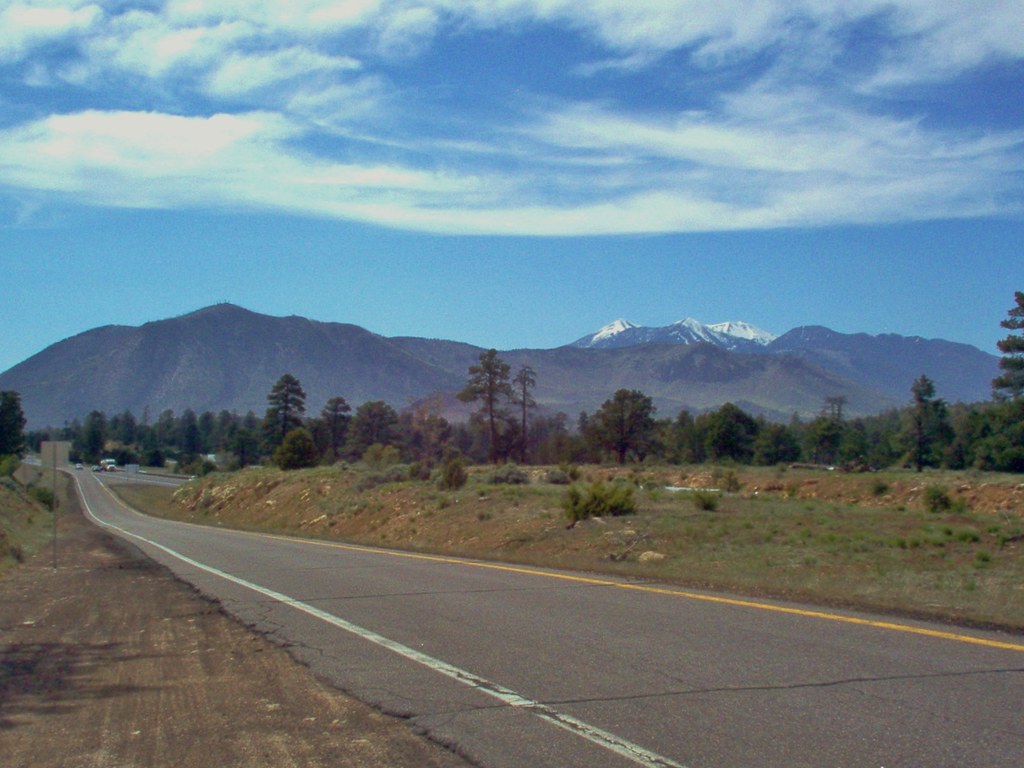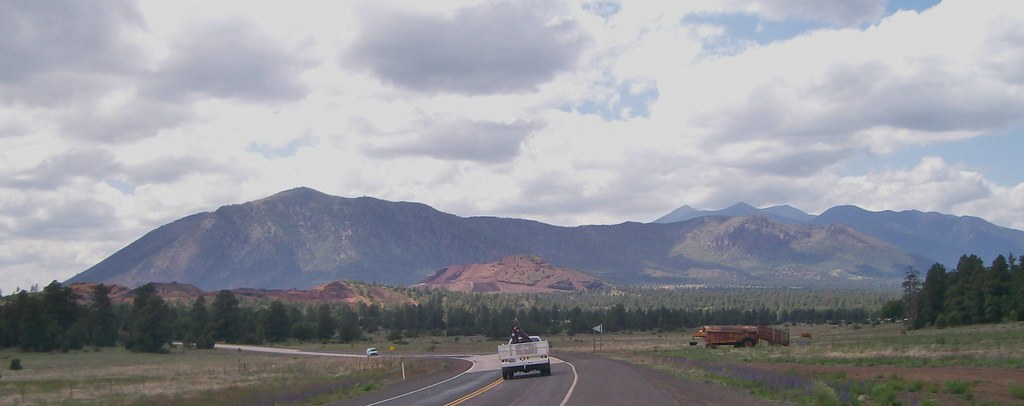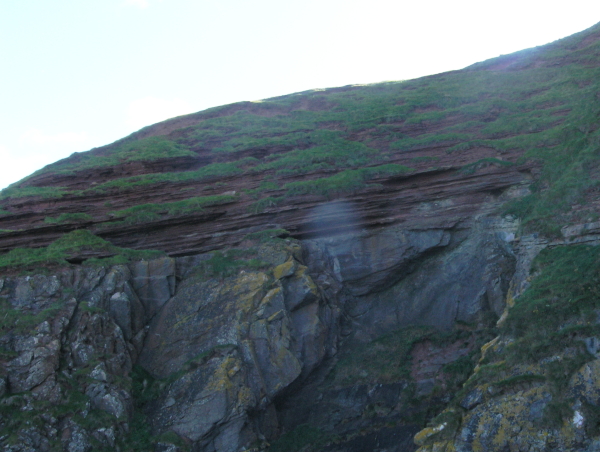I caught up on some reading whilst Aunty Flow was here. That means you’ll have more linkage than you know what to do with. And on time! So let’s get right down to it, shall we?
Biggest news of the week, at least for the United States, was Joplin getting leveled by a tornado. It’s one of those shitty things that can happen when you’re in the middle of Tornado Alley and storms are getting stronger due to climate change. For most of us, the immediate reaction was empathy and a hope that folks would make it out okay. For others…
PoliticsUSA: The Darker Side of YHWH: Janet Porter Says Tornadoes Were God’s Wrath. You knew some religious lackwit was gonna say it. As if the people of Joplin haven’t been through enough.
This shit’s depressing. So are head-in-the-sand attitudes that will allow this planet to bake to death.
Grist: Missouri tornado whips up media discussion of climate change and extreme weather. No better post if you need to sober up in a hurry.
Kansas City Star: Tornadoes! Floods! Droughts! Scientists say it’s global warming. Our own Anne Jefferson gives a kick-ass interview.
The news we poked the most fun at, o’ course, was the Rapture!
LiveScience: Failed Doomsday Has Real Deadly Consequences. Pets and people dead. So don’t tell me there’s no harm in religion.
Greta Christina’s Blog: Live-blogging the Rapture. We do still get to point and laugh, though. “There is a vanishingly small but non-zero chance of butt monkeys.” Oh, Greta, how I love you!
Pharyngula: Wrong, root and branch; wrong at every cell and molecule; wrong to the core. The aftermath, and a rant.
Science
Miller-McCune: Scientists Take Charles Darwin on the Road. Getting scientists into classrooms to talk about *gasp* evolution has some surprising – and uplifting – results. Also, Comet Theory Comes Crashing to Earth, in which we see the sad result when scientists refuse to face the lack of evidence.
Puffthemutantdragon: Bubonic Plague in America, Part I: LA Outbreak. Yes, I’m a sucker for super-deadly infectious disease stuff, but this is fascinating even if you aren’t a sucker for same. Don’t miss Part II.
Speaking of Research: A paralyzed man stands again…thanks to animal research! This, my friends, is among the many reasons why it’s important to stand up against the animal rights maniacs who think mayhem and murder are justified against animal researchers.
Neurotic Physiology: Friday Weird Science: Horsing Around and the Sexual Behavior of Stallions. You know, I owned horses for years and never realized they pleasure themselves… Also, see how to handle being wrong with kick-ass awesomeness.
Georneys: Blast from the Past: Element Talk Show. Evelyn’s posting bits of her school projects for a bit of a laugh, but this one’s brilliant. I want to see it produced! Also, the Geologist’s Alphabet is complete. Learn your ABZs! And then feast your eyes on Cape Peninsula in Pictures. Wowza!
ScienceNews: Stellar oddballs. If anyone was wondering if Kepler’s worth the money it took to develop and launch it, the answer is yes. Yes, it is. Sign of a truly great mission, this, the fact it’s already gone so far beyond its original intent.
Uncovered Earth: Expressions In Stone: Suiseki. For those of you wondering what to do with those unruly rock collections, or looking for excuses to collect more rocks, this. Bonus: suiseki, unlike bonsai, won’t die horribly because you have a black thumb. Also, Sunday Science Photos, May 15 – 21.
Contagions: Rinderpest, Measles and Medieval Emerging Infectious Diseases. Measles is younger than you think. And 400 kids die of it every day. Vaccinate, people!
About Geology: A Poet’s Advice on Geology. Walt Whitman proving science and poetry do mix. Beautifully. Plus, the d-word.
Sauropod Vertebra Picture of the Week: The world’s longest cells? Speculations on the nervous systems of sauropods. You thought the giraffe’s recurrent laryngeal nerve was ridiculous? Check this out!
Glacial Till: Meteorite Monday: Lunar meteorites. Including one of the most beautiful pictures of the Moon you’ll ever see.
Outside the Interzone: Moonday: Io. While we’re on the subject of incredible pictures of moons….
The Loom: How a zombie virus became a big biotech business. Shh. Don’t tell the anti-vaccine frothers that zombies manufacture vaccines!
Highly Allochthonous: Earthquake ‘precursors’ and the curse of the false positive. Chris Rowan takes the latest earthquake prediction nonsense down.
Doctor Stu’s Blog: Blue Lights Shown to Give a Brain Boost! But is a Better than Coffee? I need me a blue light!
Thoughtomics: Why Life is like Lego. This is purely awesome. I’ll never play with Legos the same way ever again.
Scientific American: Physics and the Immortality of the Soul. Damn you, physicist Sean Carroll, for making my writing life harder! But I’m glad you did. Too bad about the souls, really.
Bad Astronomy: Weather satellites capture shots of volcanic plume blasting through clouds. Okay, this is too cool for words – just go look.
The Official Geologist Webpage. ZOMG LOL just go have a look I can’t talk about it laughing too hard ow.
Scientific American: Looking for Empathy in a Conflict-Ridden World. Can you capture empathy in a scanner? Appears so – and the results may or may not startle you.
Quest: Geological Outings Around the Bay: Ring Mountain. Andrew, look, you know I love you – but stop making me want to move to California! Okay, actually, don’t stop.
Grist: How industrial agriculture makes us vulnerable to climate change, Mississippi floods edition. Awgawds. As if it wasn’t already horrible…
Smithsonian: Top Ten Myths About the Brain. If I ever hear “We only use 10%” again ever in my life, the person saying it will get such a smack.
Mountain Beltway: Weekend macro bugs. So pretty! A camera certainly changes your whole perspective on creepy-crawlies.
Laelaps: Long Live the Anomalocaridids! Squee! Anomalocaridids survived longer than we thought! Hooray for bizarre beasties! Also, don’t miss Brian’s ScienceNOW companion piece: Who You Callin’ Shrimp?
io9: The story behind the world’s oldest museum, built by a Babylonian princess 2,500 years ago. Modern archaeology, meet ancient archaeology.
The Guardian: Britain’s volcanic past. Epic. Geology is awesome.
Eruptions: That about wraps it up for the Grímsvötn eruption. Nice finale to the biggest Icelandic volcano news since that bloody unpronouncible one.
Scientific American: Material Poet. Cloning glaciers. I bloody love it when art and science mix!
Writing
A Brain Scientist’s Take on Writing: In Which I Wax Philosophical on Narrative Distance, POV, and Voice. This isn’t a run-of-the-mill post on those points – this is a brain scientist’s post on those points. Much food for thought for such a short post!
The Passive Voice: How to Read a Book Contract – Assignments – Part 1. Assignments, people, not assignment. As in, assignments in a contract. And if you don’t know what those are, you’d better get your arse over there and read up. Also, Part 2.
Nathan Bransford: Reversals in Novels and Movies. Or, why your story should be more like switchbacks than open road. Hey, I should write that…
Dean Wesley Smith: Think Like A Publisher #11… Electronic Sales to Bookstores. This is possibly the coolest idea ever. Who says you can’t sell ebooks in a brick-and-mortar store?!
The Business Rusch: Publishers (Surviving the Transition Part 2). It’s amazing, innit, just how many different ways people can find to screw you royally. Good thing there are people who can help you screw back.
Imaginary Foundation: Seth Godin: The Wealth of Free. “The industry’s dead.” Find out why.
Atheism and Religion
Blag Hag: Atheist high schooler receives death threats for protesting graduation prayer. Seriously. Death threats, merely for pointing out that a school-sponsored prayer is against the law. This is why atheists have to speak out, folks: to keep kids like this from being ostracized, disowned, and threatened.
What Would JT Do: They drag prayer lower than I ever could. I hope they enjoy the ensuing court battle.
Jessica Ahlquist: A Quick History. Another brave, eloquent high school student finding herself under fire for trying to get her school to understand the law.
Miranda Celeste: A worthless and dangerous report. Once again, the Catholic Church blames everybody but itself for its child-raping priests – with bonus blame-society and but-they-were-never-taught-raping-kiddies-was-wrong handwaving. Good on Miranda for ripping their report apart!
Patheos: Time for a Nontheist History Month. I’m so down with this. And can you imagine the frothing fundies’ reactions when they find out this nation wasn’t so Christian after all? Heh.
Bad Astronomy: Oregon set to remove faith healing defense for parents. Good.
Open Parachute: Confronting accomodationism. Excellent.
Women’s Issues
The Daily Beast: DSK Accuser: The Dangerous Life of a Hotel Maid. You’ll never see the woman who brings you fresh towels as anything less than incredibly brave after this.
The Difference Engine: What it feels like to be me. A neat little thought experiment that should help even the most obtuse among us understand what it’s like to be female in a male-dominated world.
Coyote Crossing: How Not To Be An Asshole: A Guide For Men. Give to every man you meet. Men not already following the guide: pay close attention.
Sasha’s Den of Iniquity: Sasha’s Brief Guide to Not Being a Douchy Misogynist. Also give this to every man you meet. See? Some men really get it. You can, too!
The Plog: Kansas Rep. Pete DeGraaf: Being impregnated during a rape is just like getting a flat tire. But I’ll bet he expects his insurance to cover Viagra while women are forced to pay for their own abortions after a rape.
Greta Christina’s Blog: Atheism, Sexism, and Pretty Blonde Videobloggers: or, What Jen Said. Dear atheist males: you should be better than this. Please ask the nearest female atheist to whack you over the head with a clue-by-four. Repeat as necessary.
Blag Hag: We’re not here for eye candy. Got that yet?
Skepchick: The Secular Movement’s Position on Women’s Rights. As in, when you’re fighting frothing fundie encroachment on secular society, you shouldn’t forget the war against women they’re waging.
Almost Diamonds: Sexism Always Wins, but It Still Loses. There’s good news. Nothing like allowing the opponent room to shoot self in foot, is there?
Sociological Images: Serena Williams’ Patriarchal Bargain. Why are we playing a game we can’t win, ladies? It’s time to change that game.
Mike the Mad Biologist: Refusing to Cede the Moral High Ground on Abortion. This is what abortion really is. A blessing. And we shouldn’t forget that, lest we lose all access to that blessing. Oh, and before you start babbling about adoption, read this comment at Pharyngula.
The Independent: Laurie Penny: Say it again: it’s our right to choose. Britain’s facing the same kind of frothing fundie anti-abortion crusades we are here. Ladies, if you don’t want to end up a baby factory, time to get loud.
Society and Culture
MoveOn: The Most Aggressive Defense Of Teachers You’ll Hear This Year. I don’t normally point to videos, but da-amn, this one’s worth watching in its entirety.
A Teacher on Teaching: Sham Standards: Governor Kasich and the Standardized Testing Fetish. Veterans, teaching-to-the-test, and good old righteous rage. You must read this, which is why it’s in bold.
Racialicious: How to Debunk Pseudo-Science Articles about Race in Five Easy Steps. One of the best how-tos ever – definitely one we’ve needed.
Technosociology: Why Twitter’s Oral Culture Irritates Bill Keller (and why this is an important issue). I love posts that make me look at something familiar through new eyes. I’ll never see Twitter quite the same way again.
Rationally Speaking: Who dunnit? The not-so-insignificant quirks of language. It’s fascinating how language can change one’s views. This post shows how the way we word things can change the way we understand the world with chilling clarity.
Not Exactly Rocket Science: Bad gossip affects our vision as well as our judgment. Speaking of how language affects us, check out how a little gossip can change the way we actually see.
Decrepit Old Fool: Consumerism and attachment. Clocks, consumers, and a bit o’ Zen. Also, The daughters of popular culture, in which the People of Wal-Mart and children’s toys are used to make some excellent points about our society.
Bug Girl’s Blog: Photos, Flames, and Copyright. Copyright is important. So is not being a total asscrunch when you think someone’s violated your copyright (but really hasn’t). Also, never ever buy a picture from Ron Wolf. Really, don’t. There are plenty of photographers who aren’t gargantuan assholes who also take better photos. Give them your business.
Almost Diamonds: The Role of Confrontation in the Gay Rights Struggle. An awesome list of resources for those who want to understand the subject. Accommodationists, take especial note, please, and extrapolate accordingly. And don’t miss Stephanie’s Scientific American post: The Politics of the Null Hypothesis.
The Guardian: Our ignorance was bliss for Fred Goodwin. Why we must learn to say, “That’s tough” a lot more often. In fact, it’s so important that I’m going to quote it right here:
















